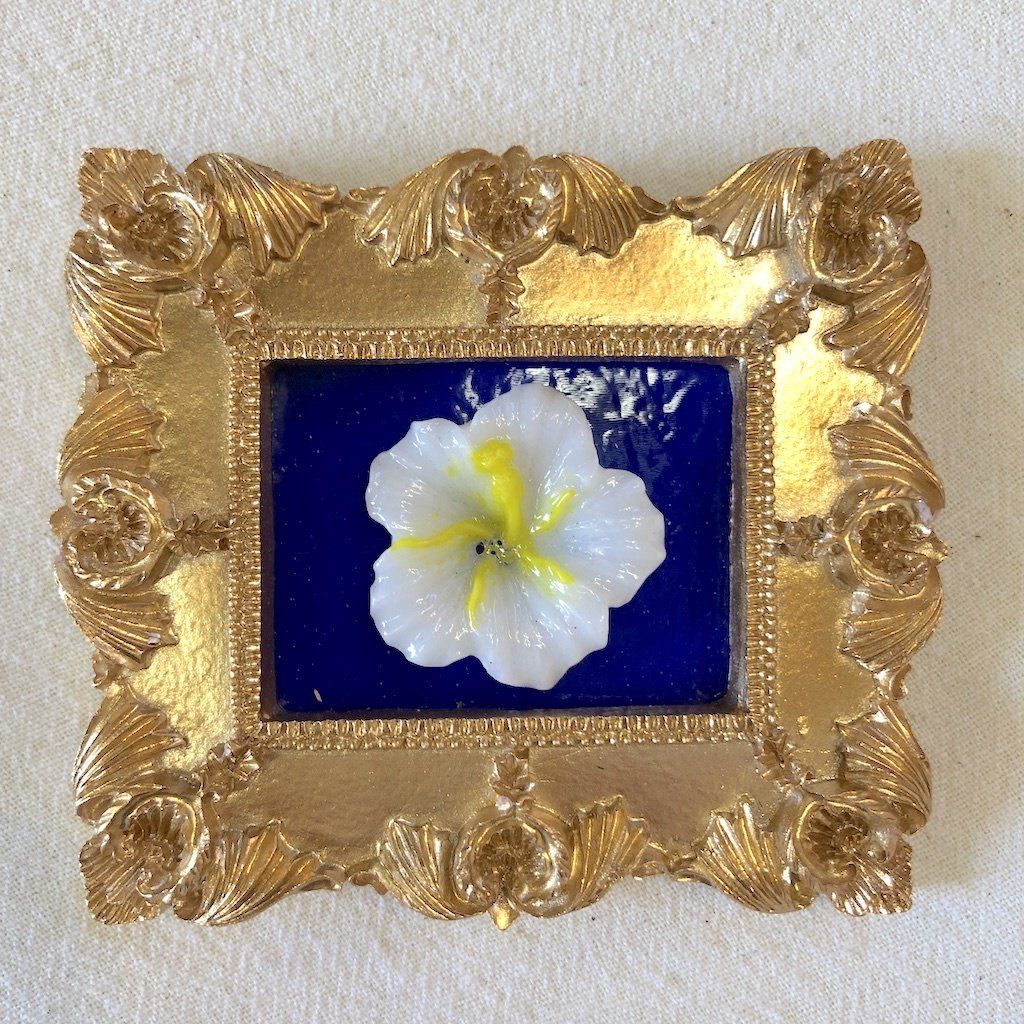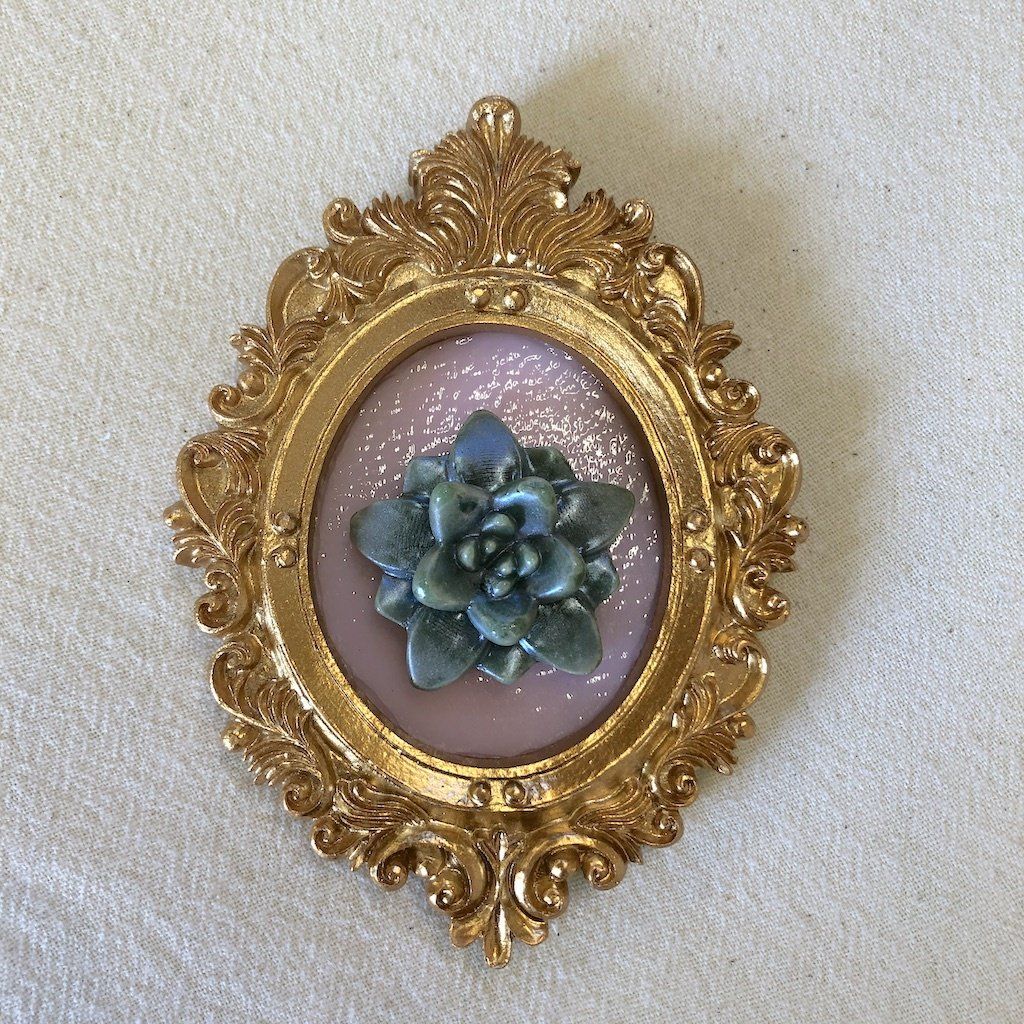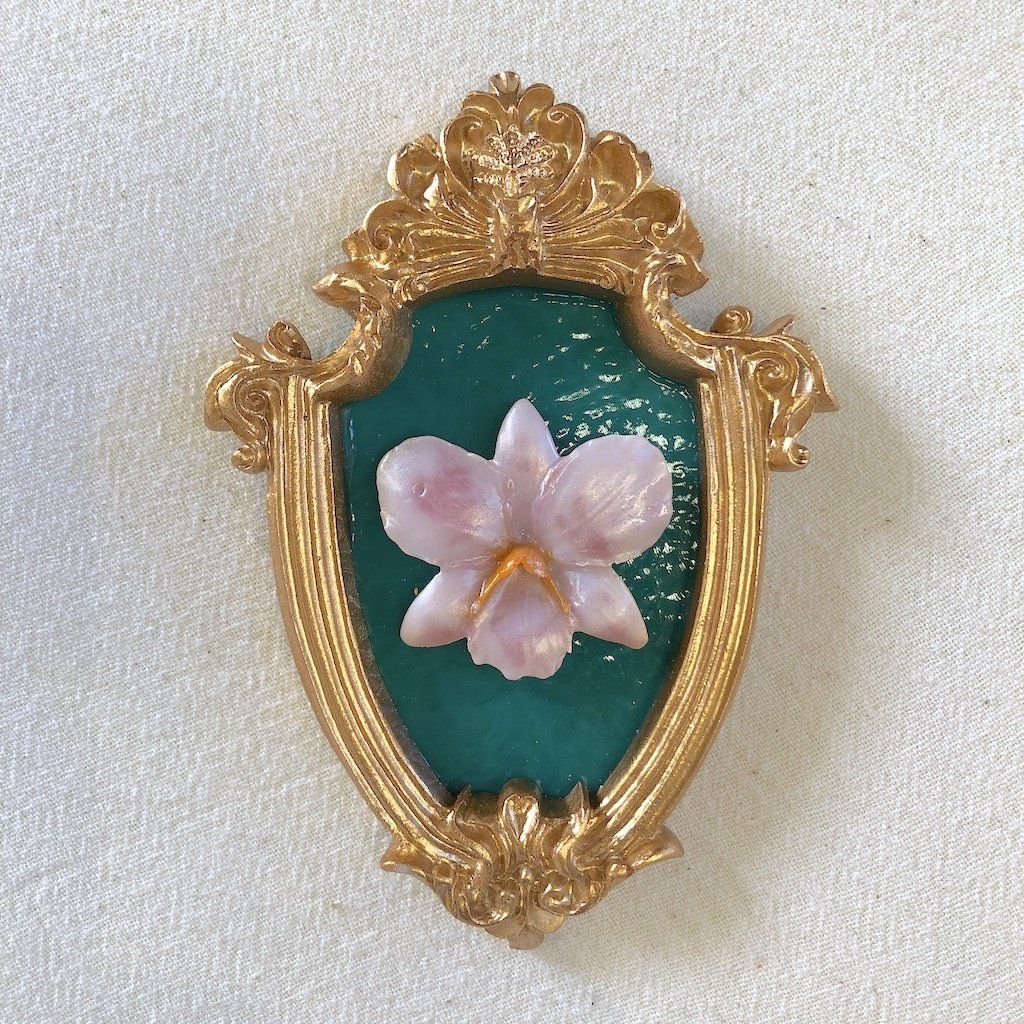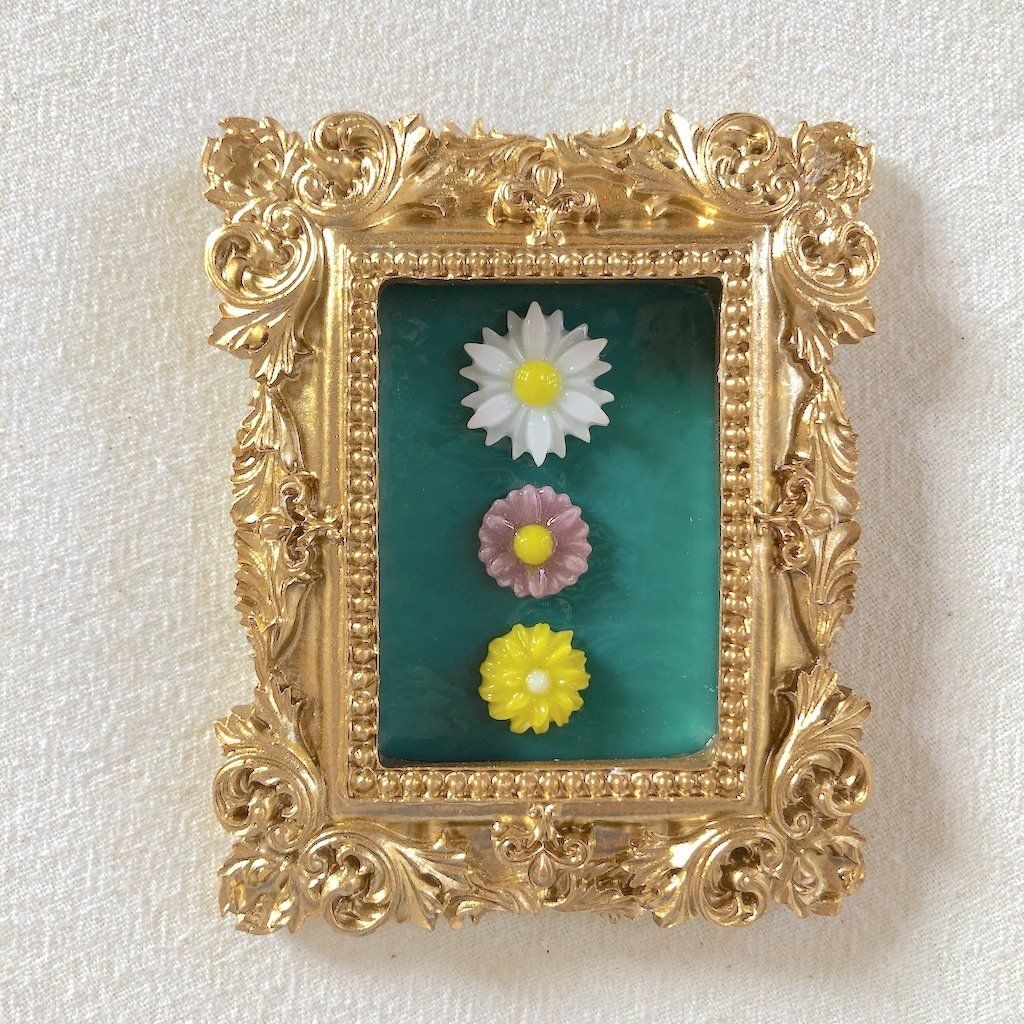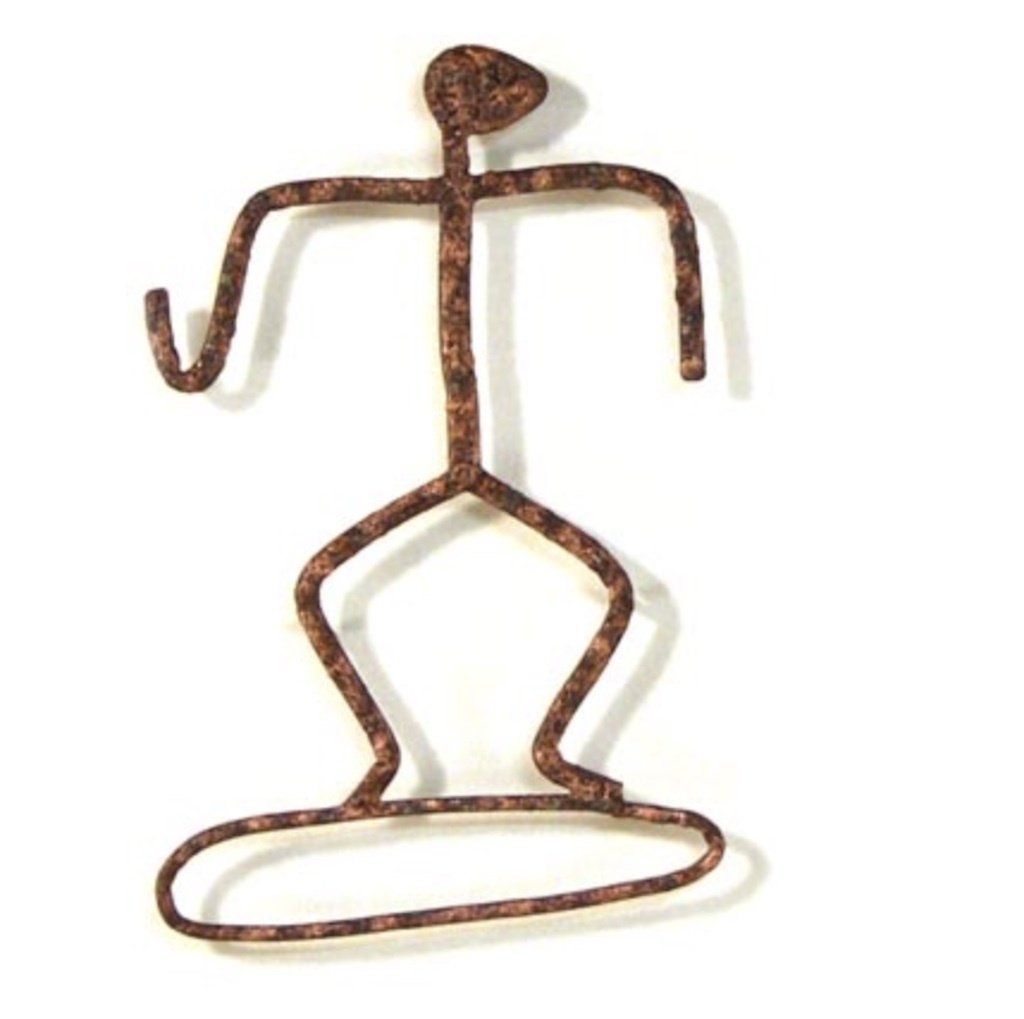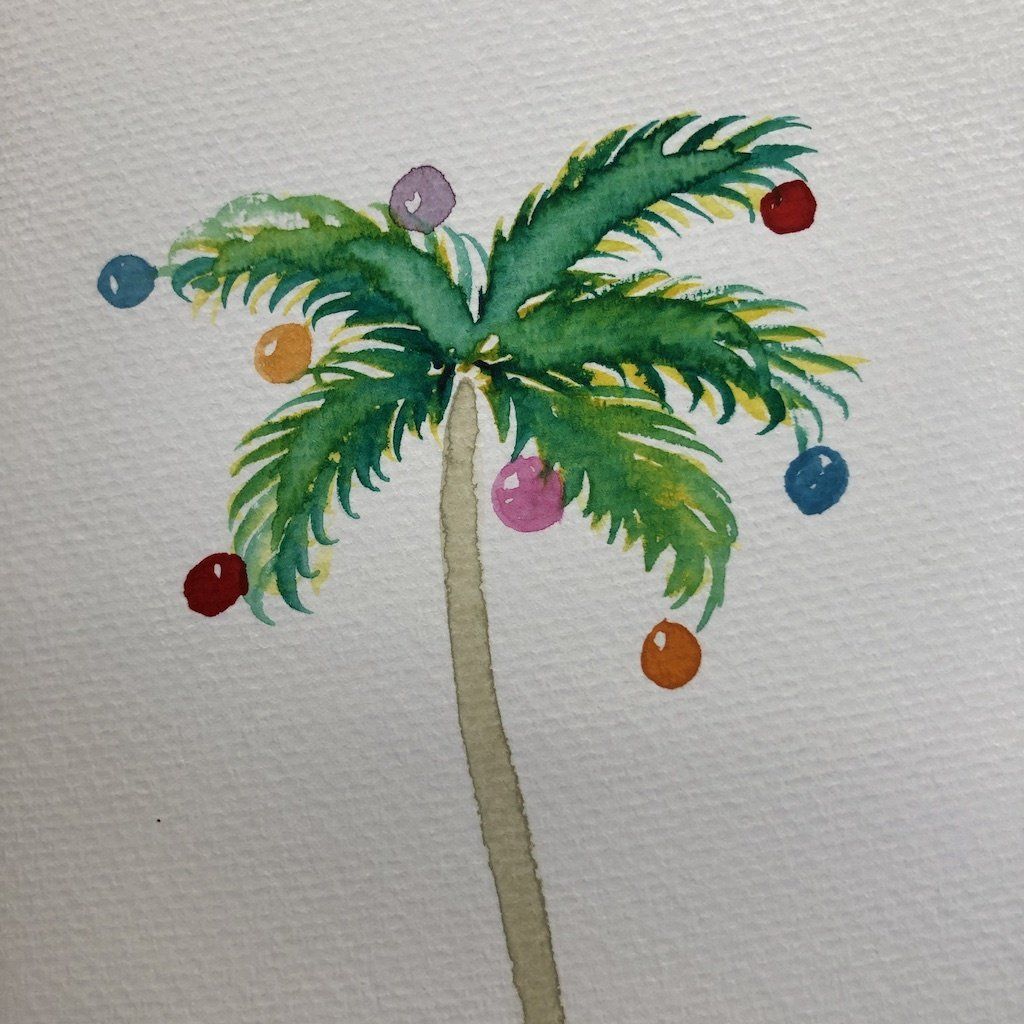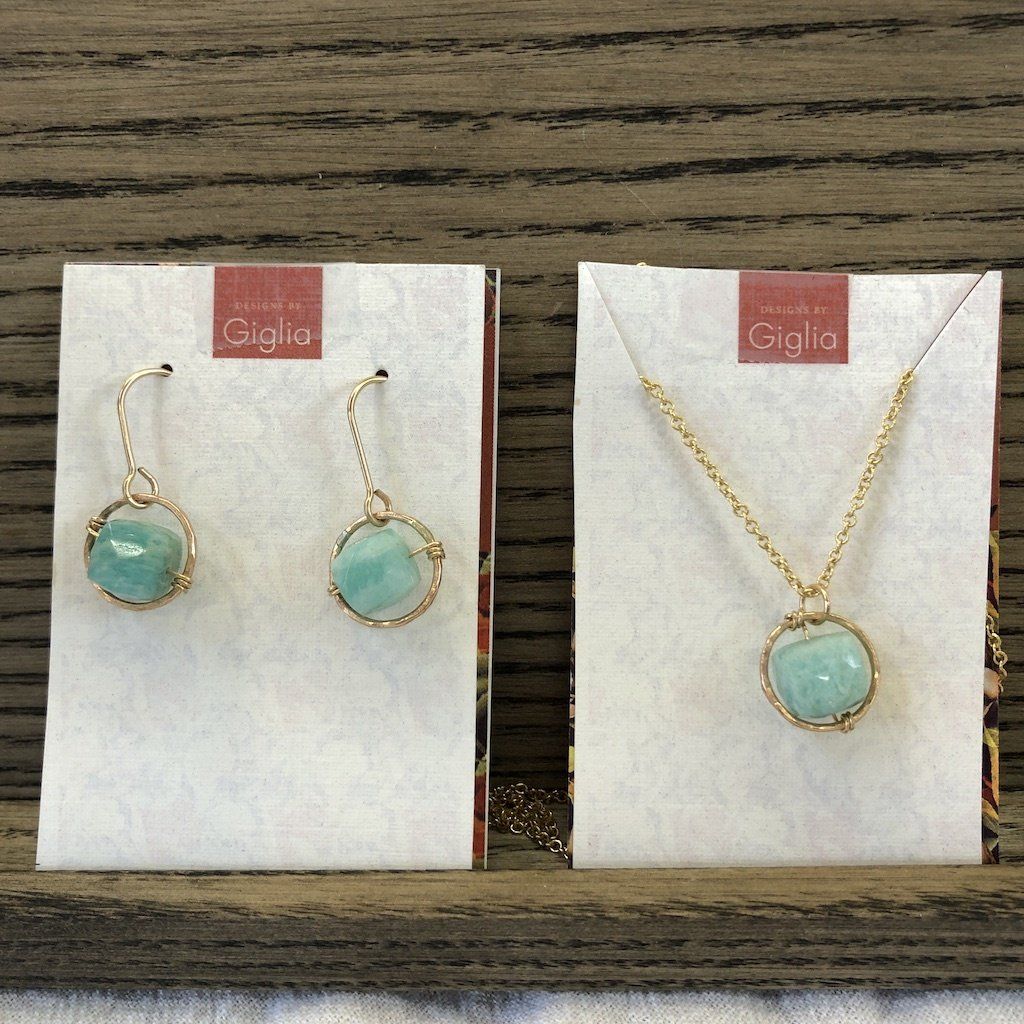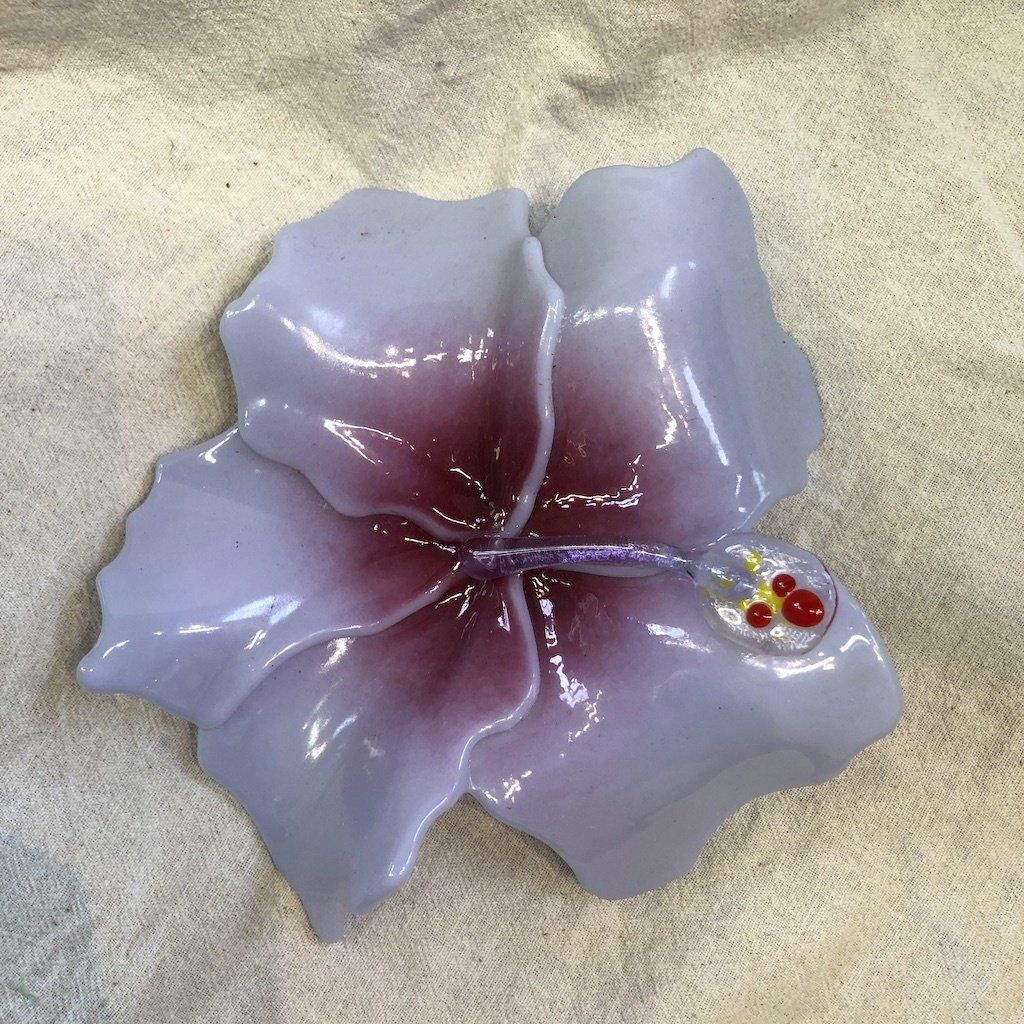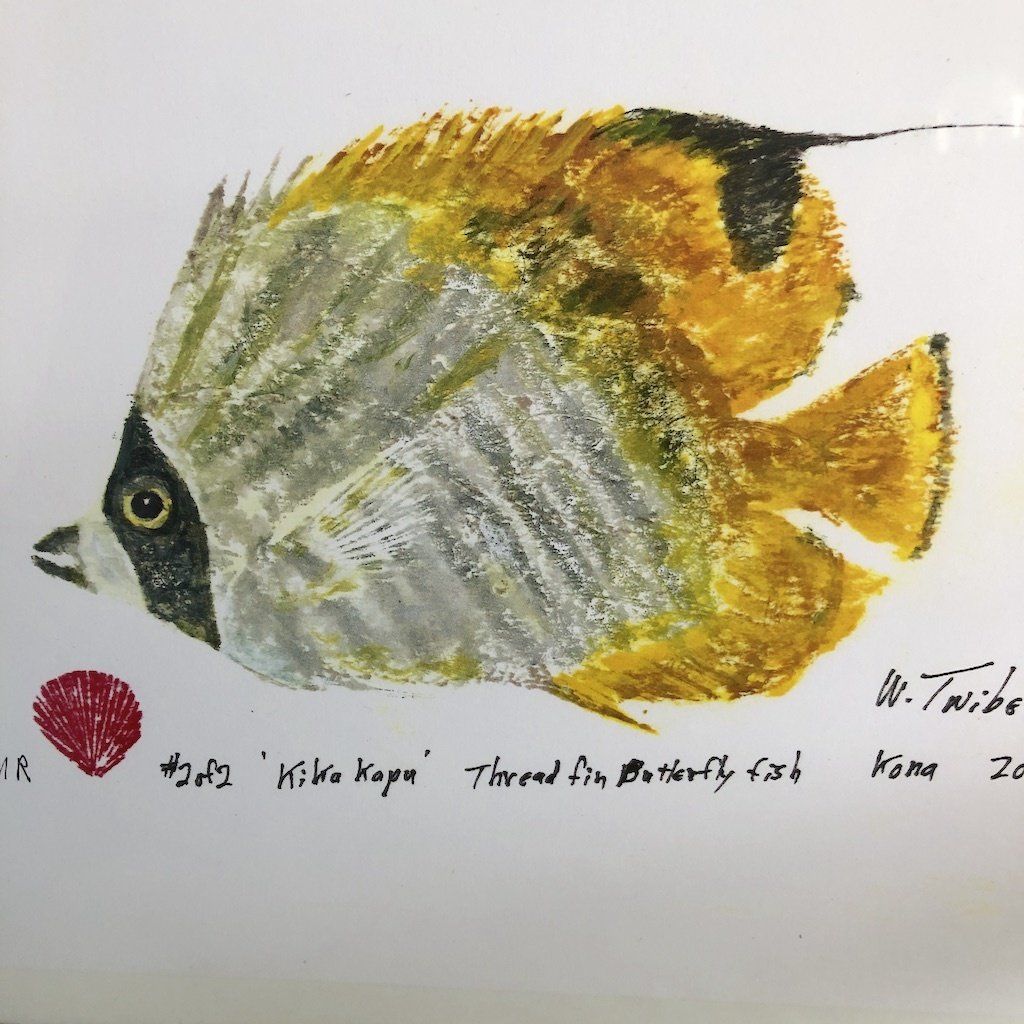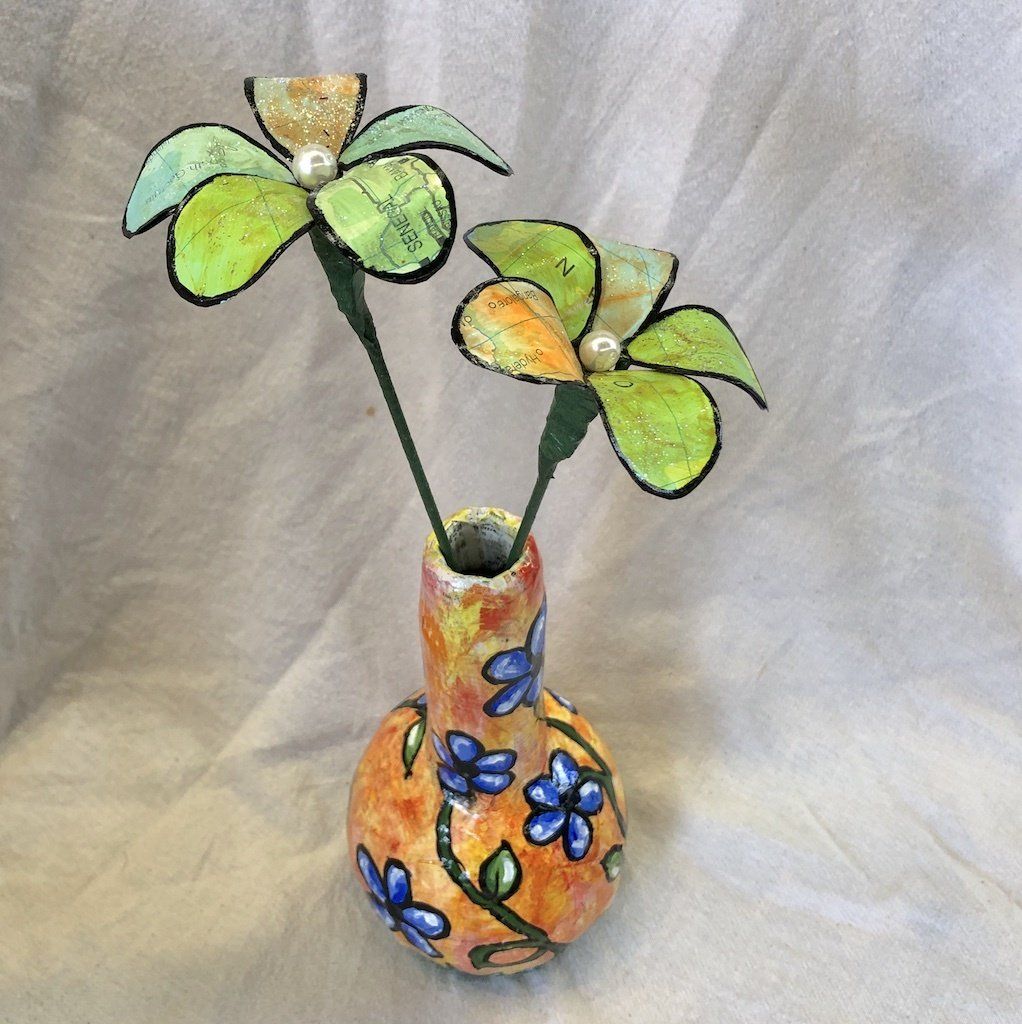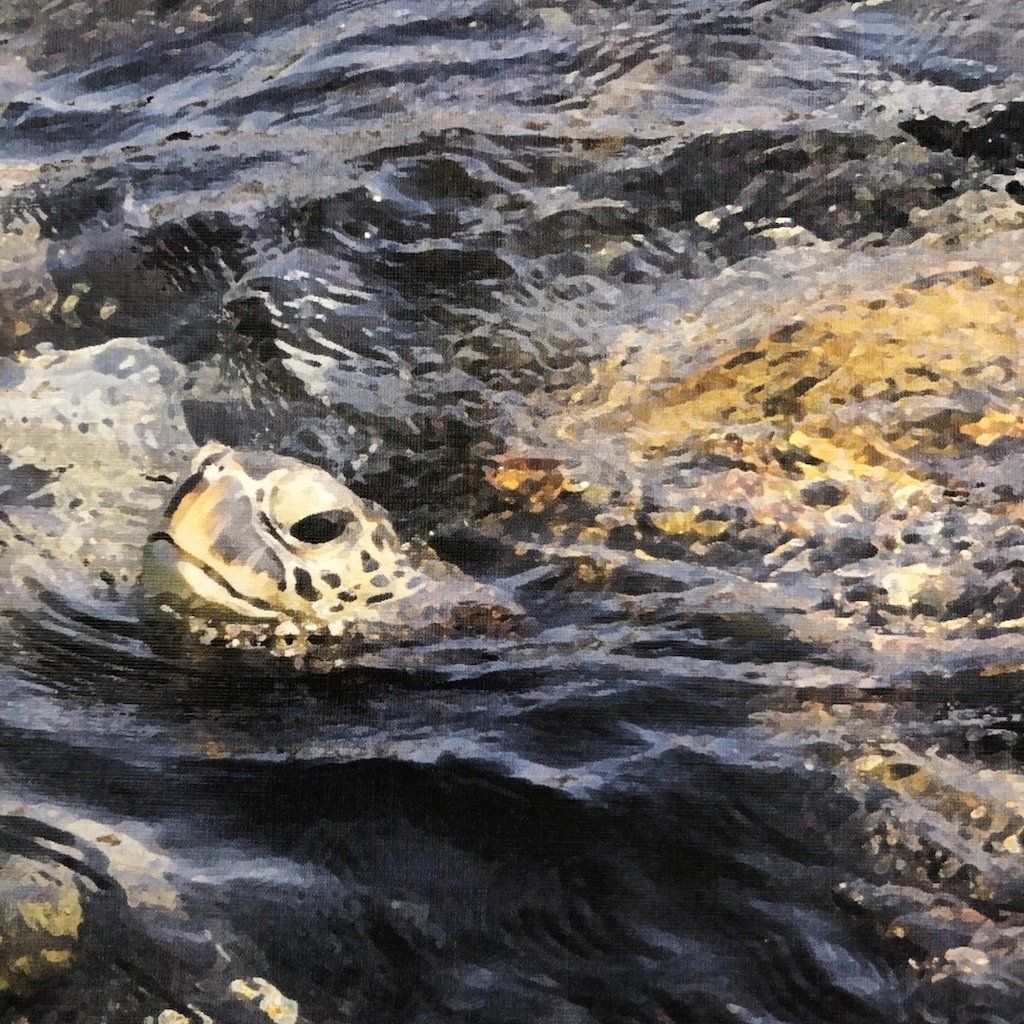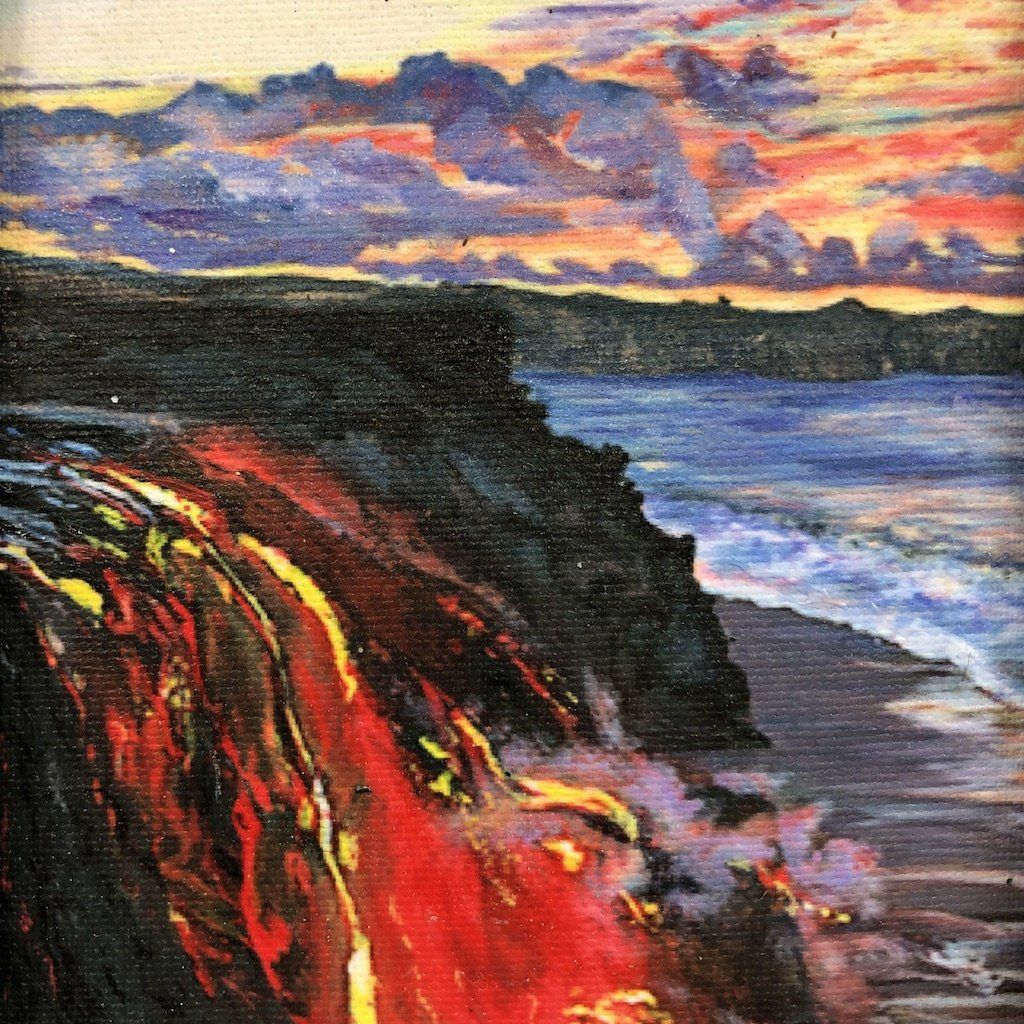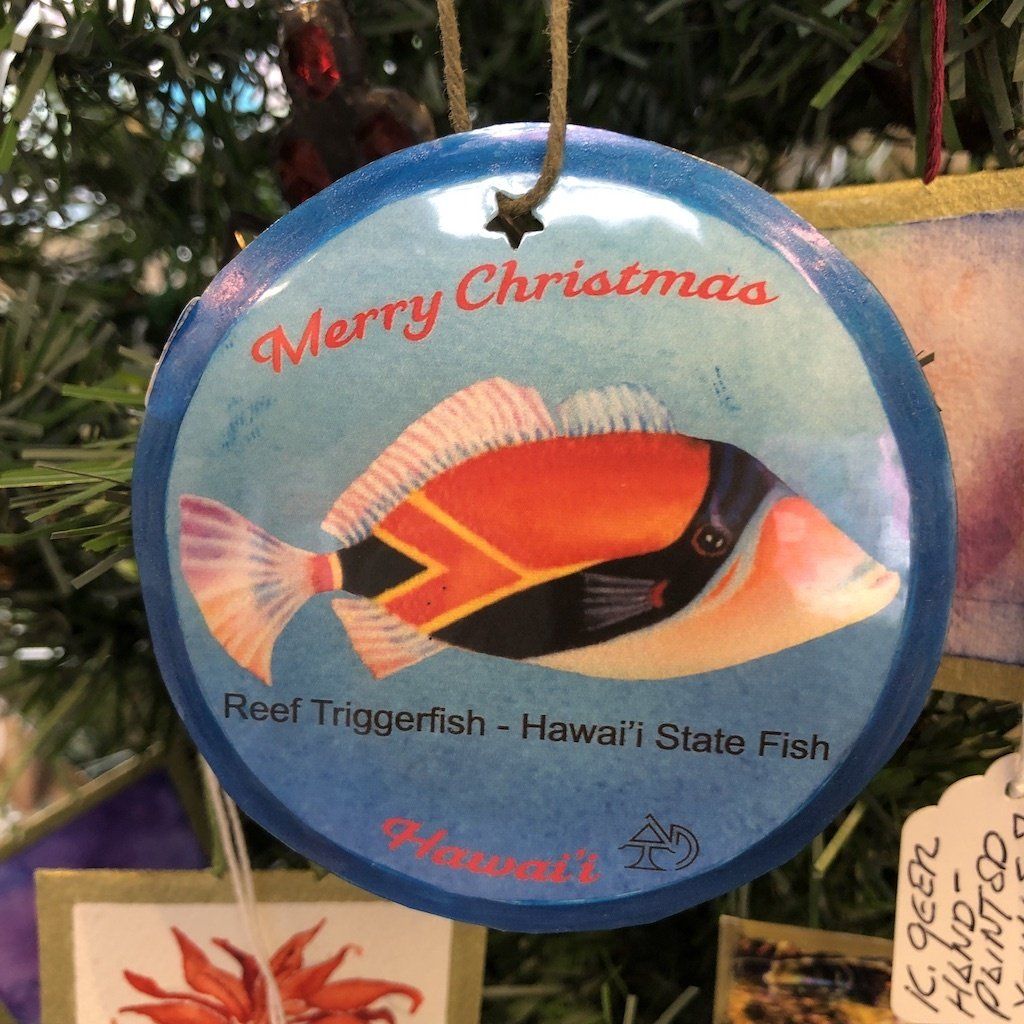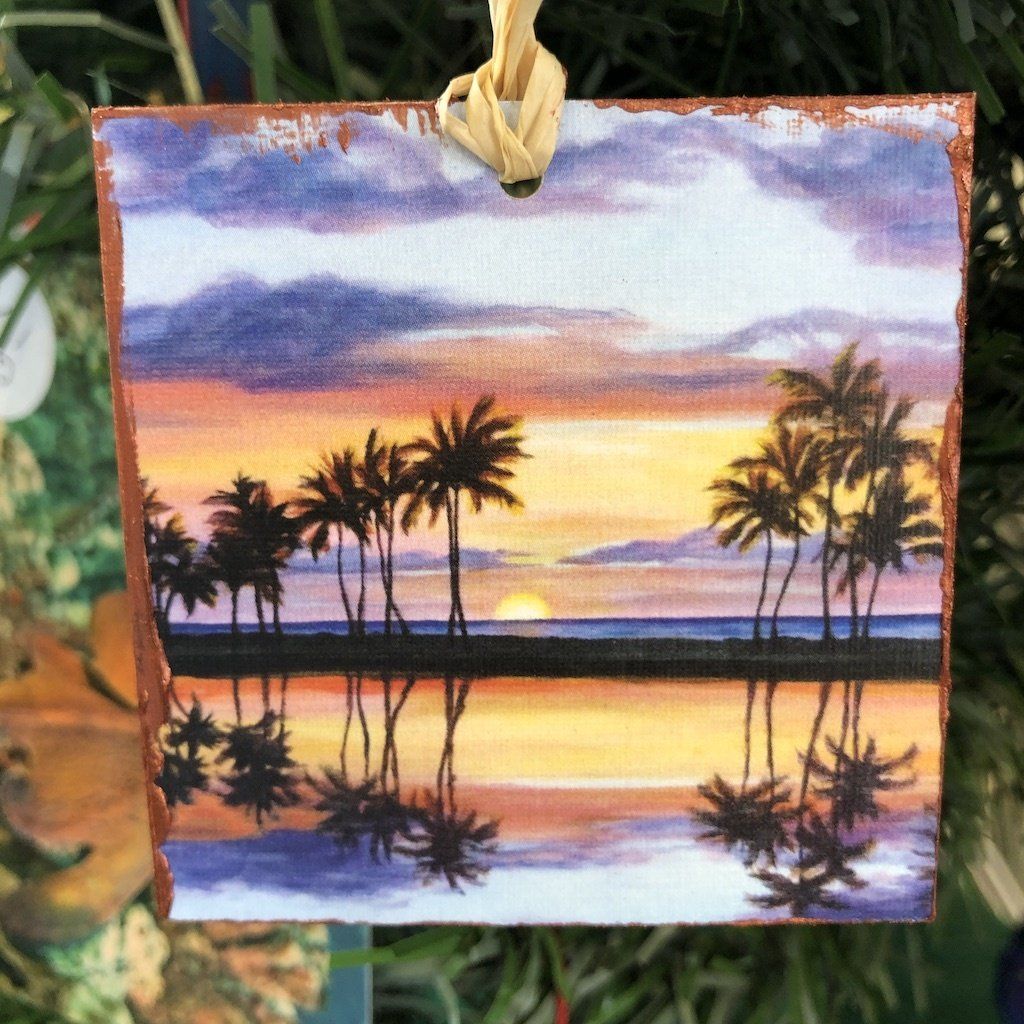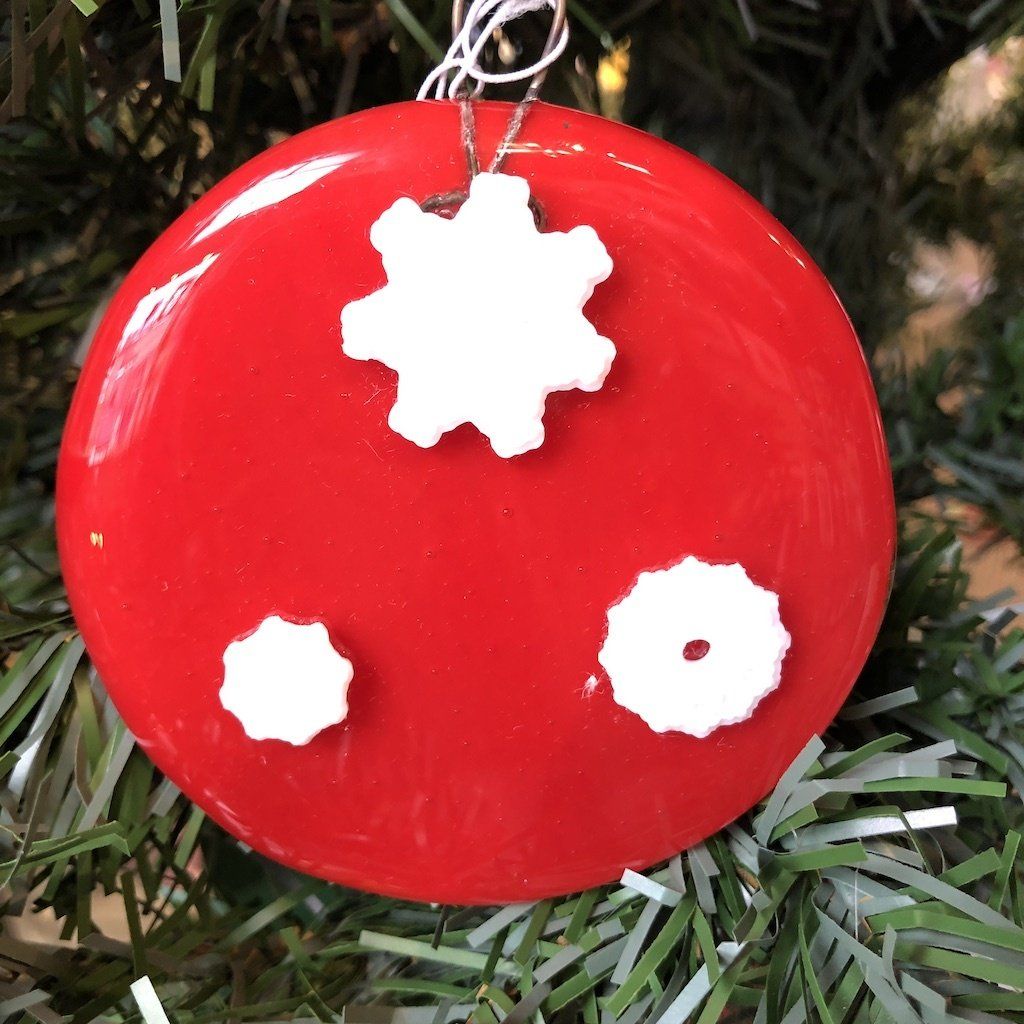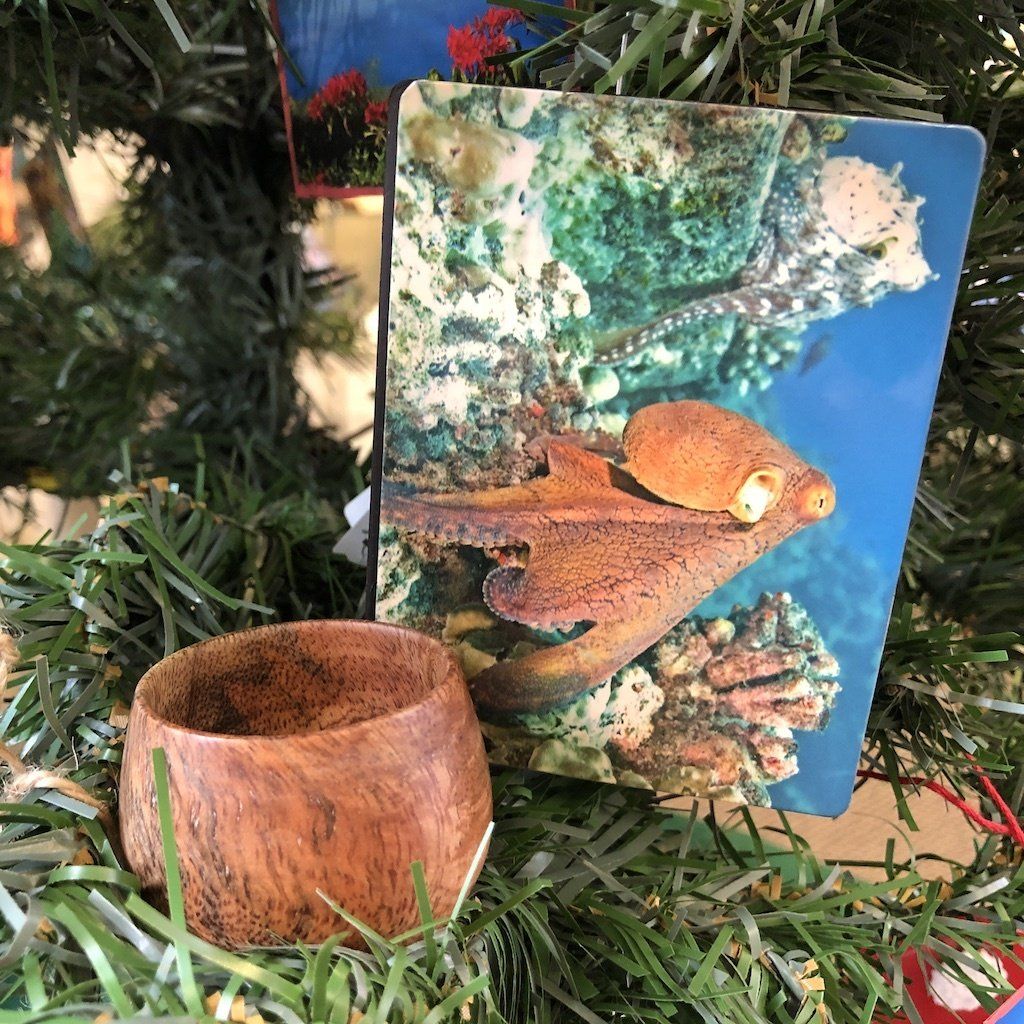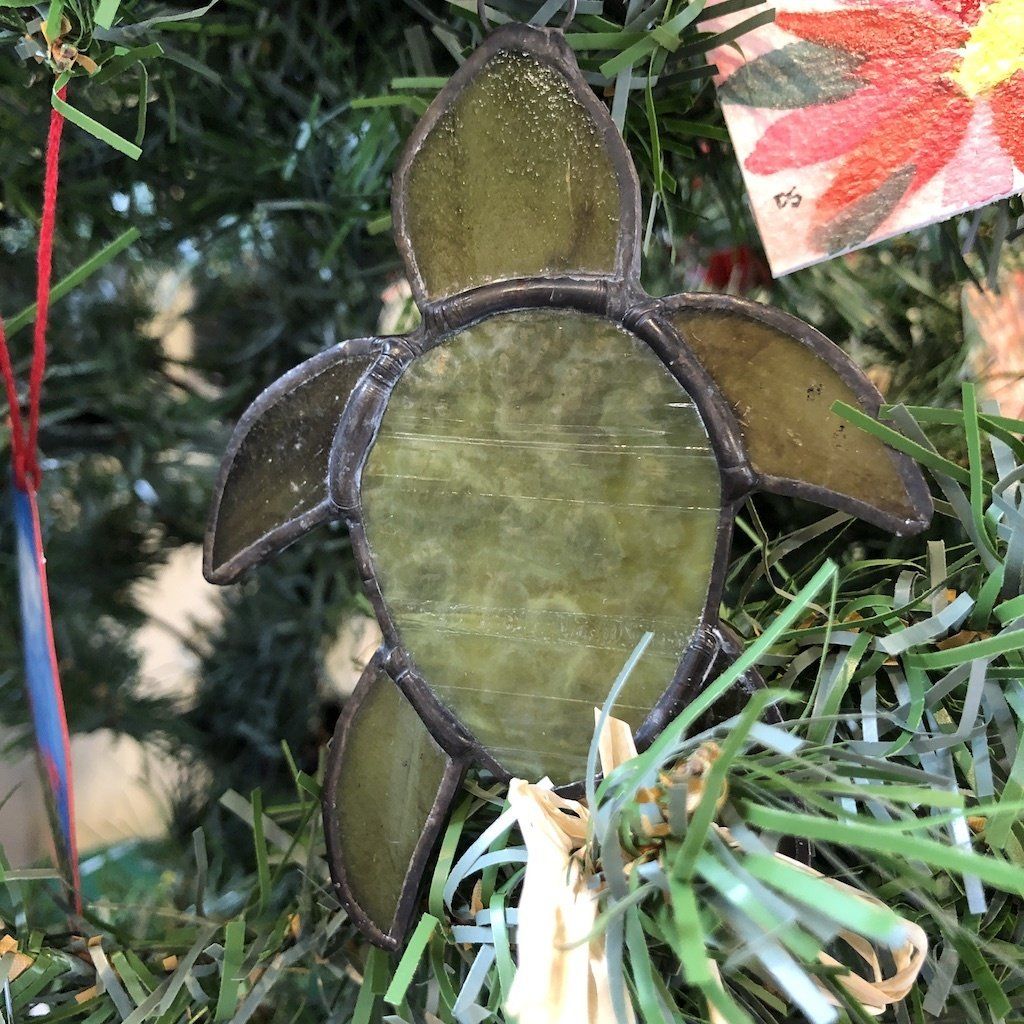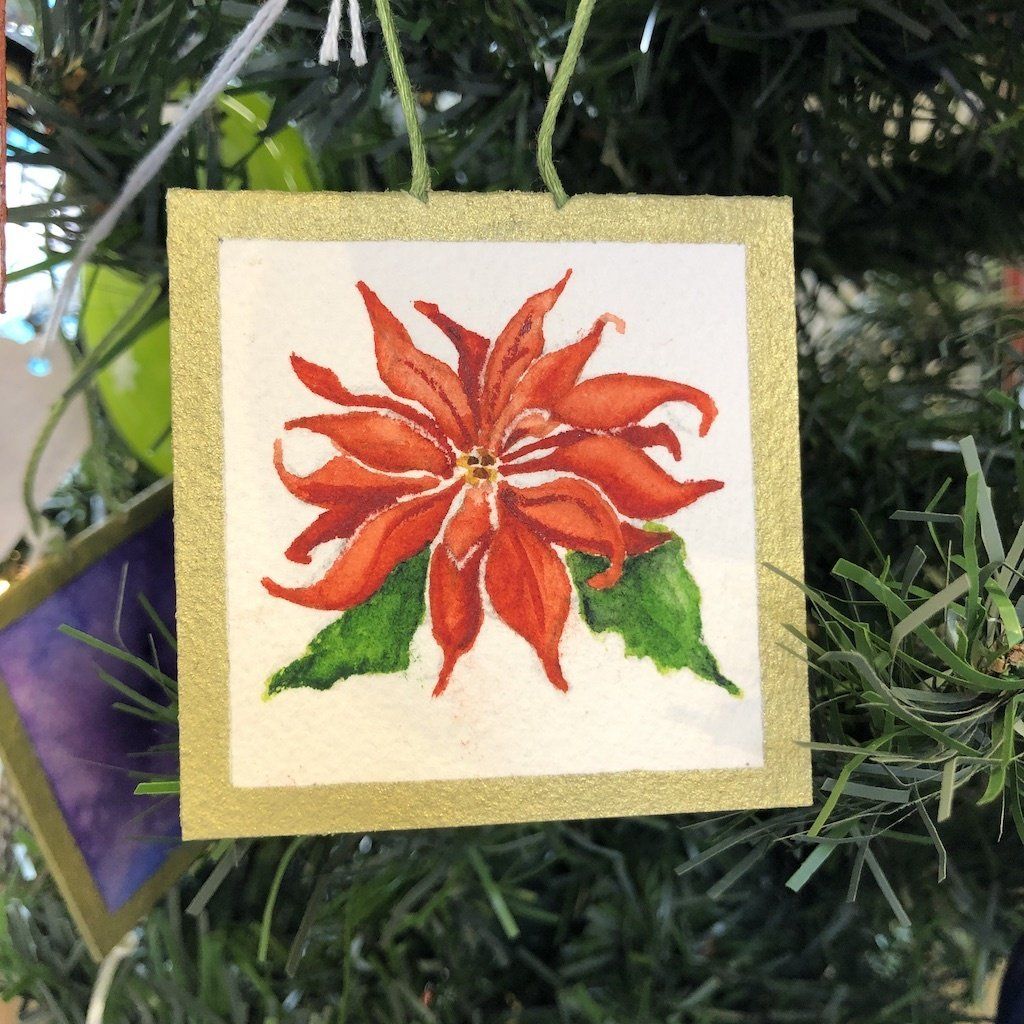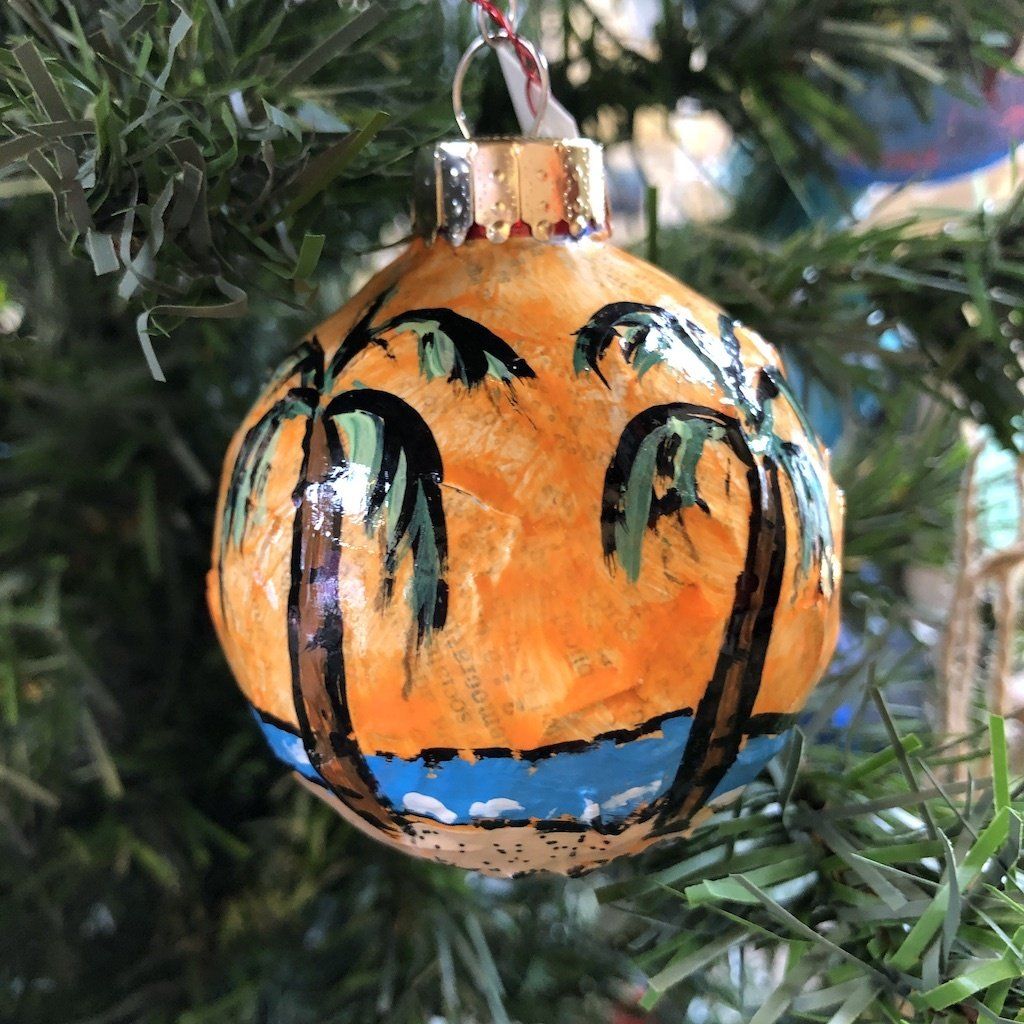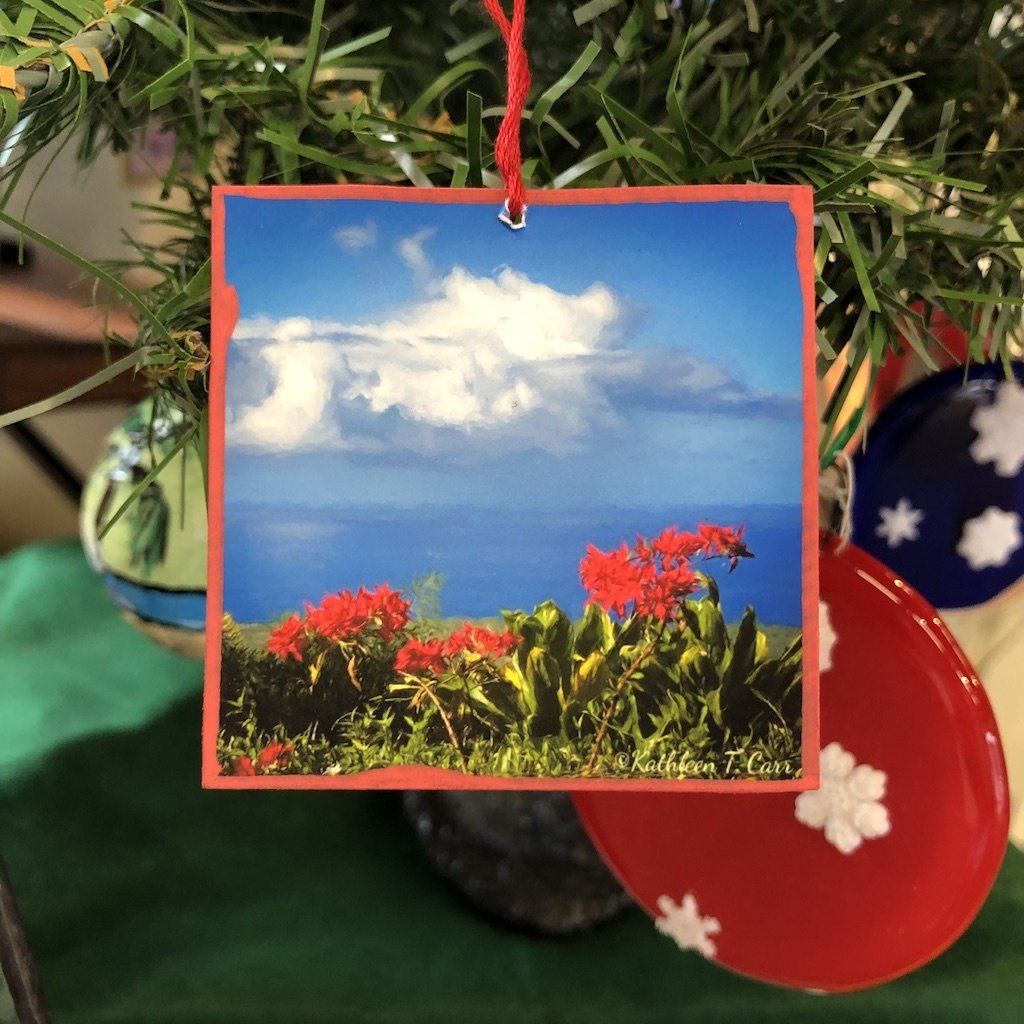December 2022 at the Gallery
Volume 13, Issue 12
I have been playing with glass for almost 20 years now. I started as a mosaic artist, dabbled in stained glass and then took a fused glass class at a local art school and fell in love.
I am also a knowledge junkie and glass knowledge is a vast and deep pond to dip from. With glass, one has to know all about color and composition, but a bit of chemistry, engineering, and physics knowledge comes in handy. Different color glasses have different densities and react differently to heat. For example, white glass is very resistant to flow and black glass is very willing to flow. Opaque glass is stiffer than translucent glass. And then there are chemical reactions to know about. Glass colors result from additions of metal oxides to the glass and sometimes these oxides react with one another. So when mixing a glass with a lot of copper in it (blues and greens mostly) with glass that has a lot of sulfur (yellows), a dark line will form on the boundaries where the glass touches, a chemical reaction. And that doesn’t take into account different levels of heat resulting in different levels of softening of the glass. Sharp to rounded, all of this needs to be controlled by the artist.
All this knowledge means that playing with glass is all about experimentation. When I complete a piece and slide it into the kiln and close that lid, I don’t know what’s going to happen. I don’t know what the final product will look like in the morning when I open it back up after it has heated, annealed and cooled. When heating glass to nearly 1500℉, it moves, flows, and behaves in unexpected, unpredictable ways. So every morning when opening the kiln is like Christmas morning! I wake up, fix a cup of tea, and then go check the kiln to see how things turned out. Sometimes the kiln gods are good to you, and sometimes not.
I recently purchased a large lot of crushed glass called frit and experimenting with frit led to these seahorses. Not having used much frit prior, the seahorses and gecko were the results of these experiments.
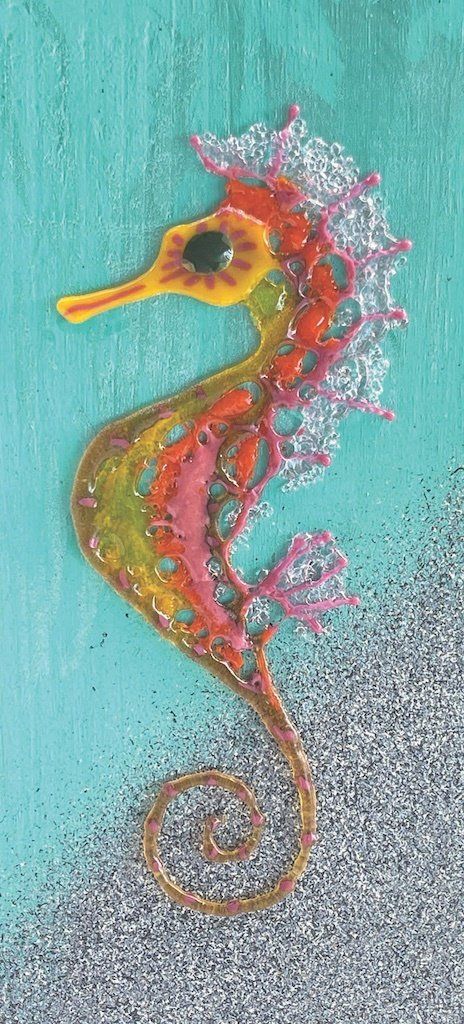
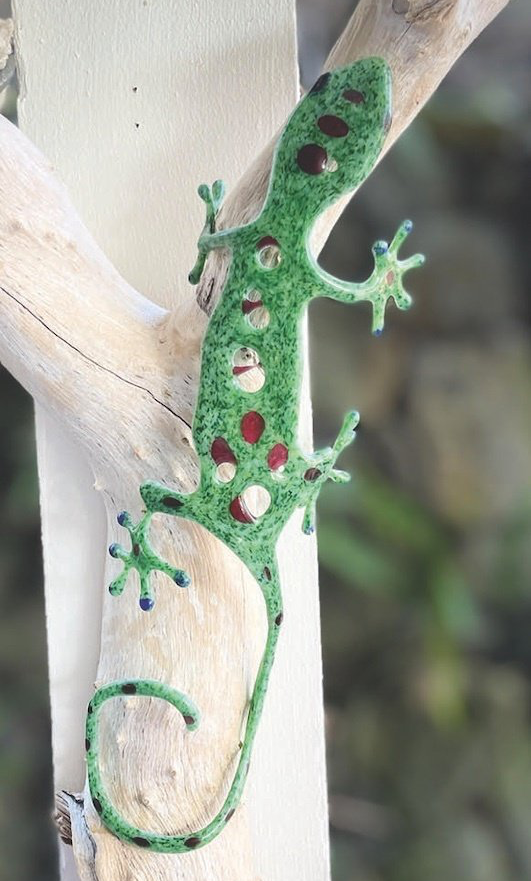
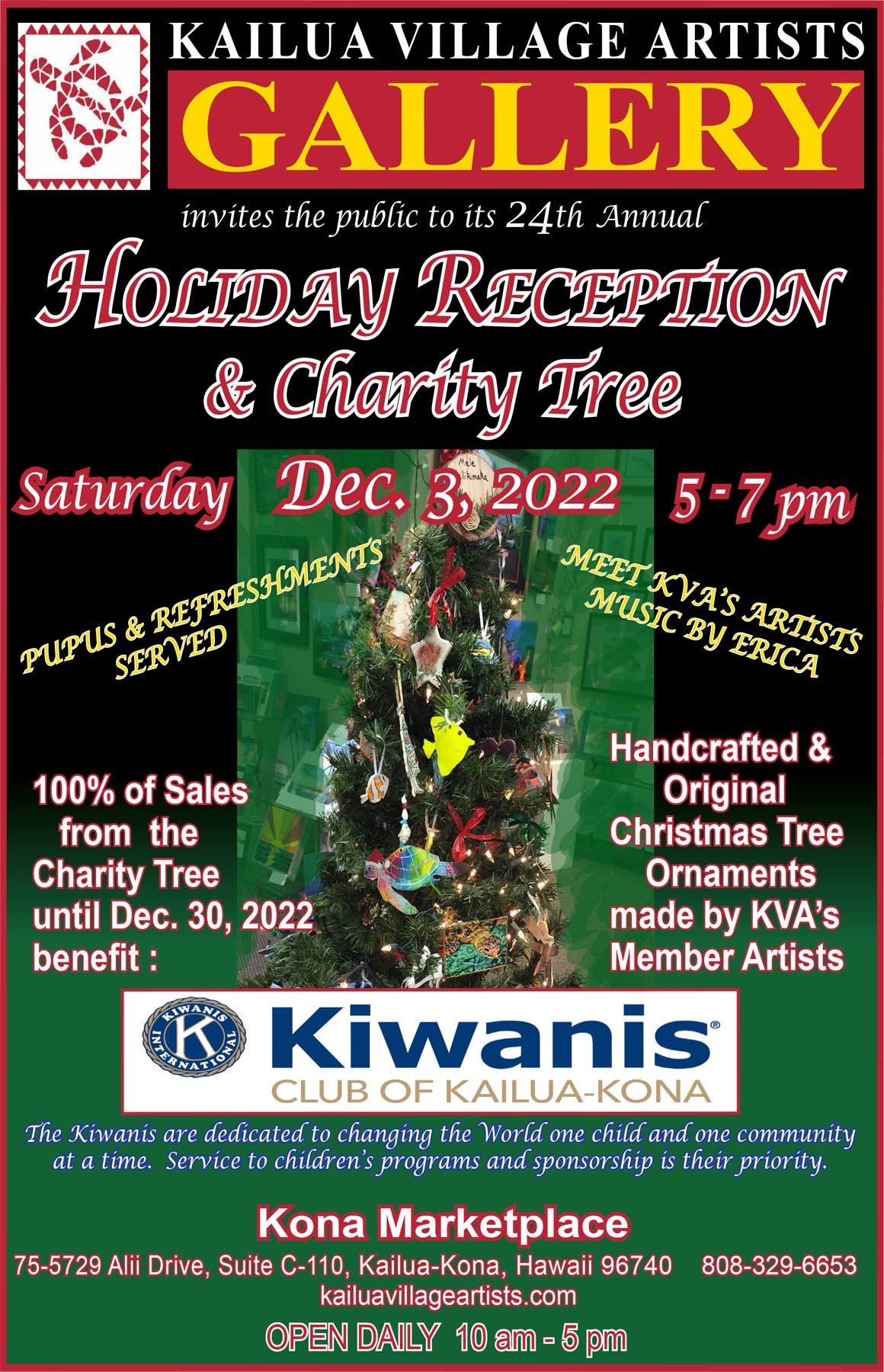
Every year around now, member artists at KVA each donate 10 handmade Christmas tree ornaments to decorate our "Charity Tree." The tree is displayed at the KVA Gallery throughout the month of December and 100% of Charity Tree Ornament sales are donated to the Kiwanis Club of Kailua Kona. Last year, KVA donated $995. to the Kiwanis. Like the economy, some years have been more bountiful than others, but there is a record of annual donations (even during the pandemic) for as long as we've had electronic records. That says much about our community and our resilience. We are proud to be part of that community.
This year, after a two year pandemic hiatus, KVA is also resuming their Annual Holiday Reception that had accompanied the Charity Tree in 23 past years. All member artists will be present to meet and greet over pupus and refreshment and musical entertainment.
As a relatively new member to KVA, this will be my first Holiday Reception. I had heard of the Kiwanis, but was unfamiliar with their mission or goals. Being co-editor of the KVA News gave me license to find out (I love this job!) and share.
Kiwanis are all about projects focused on children, at the community level and the global level. There are more than 7,000 Kiwanis clubs spanning more than 80 countries and geographic regions. Each club contributes annual dues and one annual fundraiser to Kiwanis International (the mother ship) which takes on large-scale challenges like preventing neonatal tetanus through vaccination programs and eliminating iodine deficiency disorders through nutrition. Beyond that, Kiwanis Clubs are a ready group of volunteers and fundraisers to aid local projects that benefit local children.
There are two Kiwanis Clubs on the Big Island, the Kiwanis Club of East Hawaii, and (drum roll) the Kiwanis Club of Kailua Kona. Twenty-two active members strong, the Kiwanis Club of Kailua Kona has an impressive resume of community service including::
- Provision of car seats, blankets, and even handmade stuffed animals to Kona Community Hospital.
- Provision of helmets and assistance in Bike Safety education and training with PATH Hawaii.
- Participation in Diaper collection drives and financial support for the Hawaii Diaper Bank.
- Provision of supplies to Kids Matter and Child Welfare Services.
- Food drive and provisions for the Salvation Army's Thanksgiving Meal Project.
- Provisions for the Salvation Army Back to School Supplies Drive
- Volunteer bell ringers for the Salvation Army Christmas Red Kettle Bell Program.
- Support of Key Clubs at Kealakehe High School.
- Sponsor of an annual Kiwanis Scholarship for a local college bound student.
- Provision of art supplies and support for an art contest at Kealakehe Intermediate School.
- Quarterly participation in
Hawaii Highway Cleanup.
None of the local club members - board members or general members - receives financial compensation for work. In fact, they pay membership dues. In the words of Warren Huckabay who is President of the Kiwanis Club of Kailua Kona, "We pay to volunteer."
Summary:
The Kiwanis Club of Kailua Kona Are A Ready Group Of Fundraisers And Volunteers For Local Projects Which Benefit Local Children.
100% Of Charity Tree Sales Will Benefit Local Children.
How inspiring is that!
Art Journeys With Shannon Nakaya: Pigments, Part 3
Walk into an art supply store today and it seems like acrylic products dominate the paint displays. So what exactly is an acrylic paint? At its fundamental level, modern paints are still a mix of ground up powdered pigments and a liquid binder, just like tens of thousands of years ago. Some of the pigments are still natural, while others are chemically synthesized. As the powdered pigments are ground into finer powders and blended in different, yet standardized combinations, there is a broader range of ready-made colors to choose from.
The liquid binder is where the acrylic comes in. Acrylic paints use water and an acrylic resin as the liquid binder. Acrylic resin is synthesized from acrylic acid, which is derived from polypropylene, which is derived from petroleum. Essentially crude oil and a lot of chemical distillation, separation, refinement, and transformation. Otto Karl Julius Rohm was the very prolific pharmacist and chemist credited with more than 70 patents, including acrylic resin.
When the paint is exposed to air, the water evaporates and there is a chemical reaction wherein the acrylic resin forms into a stable solid within which the finely ground pigment particles are entrapped.
Acrylic paints come in a variety of colors, thickness, and grades. They are popular among artists because they are quick drying, clean up with soap and water, and adhere to almost any surface.
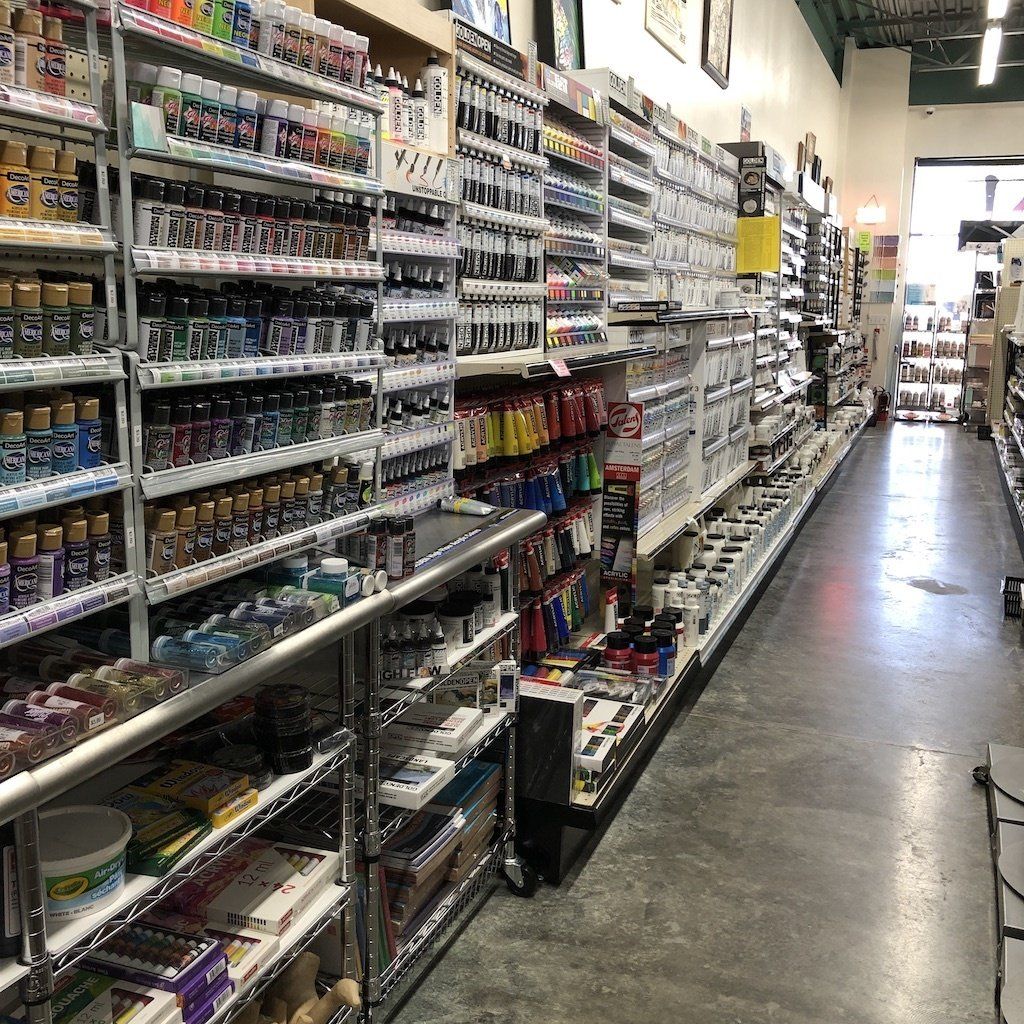
Paint isle at Akamai Art Store, Kailua Kona's best art supply store ever!
While the Akamai Art Store's inventory is impressive enough to make local artists feel like children in a candy store, it is the amazing owners (Johanna and Shirley) and staff (Dawn) that make it such a fun and inspiring place to be. Backing up their motto, "Art Makes You Smart," they are very knowledgeable about all kinds of art and art materials. In fact, it was Shirley who inspired this series of articles by throwing out several casual comments about acrylics that intrigued me enough to want to learn more. Hundreds of acrylic substances and colors that can be combined this way and that, creating even more colors and textures, without anything blowing up! So much potential. Too much fun!
Inspired by Others
After researching Kiwanis international and interviewing two board members for our local Kiwanis Club of Kailua Kona, I was inspired enough to want to really make something special for the KVA Charity Tree. My art is Origami Design and Sculpture, so I designed two ornaments with the Kiwanis in mind. "Keiki (child) wearing an aloha shirt." and "Keiki (child) wearing a
mu'umu'u (Hawaiian dress)."
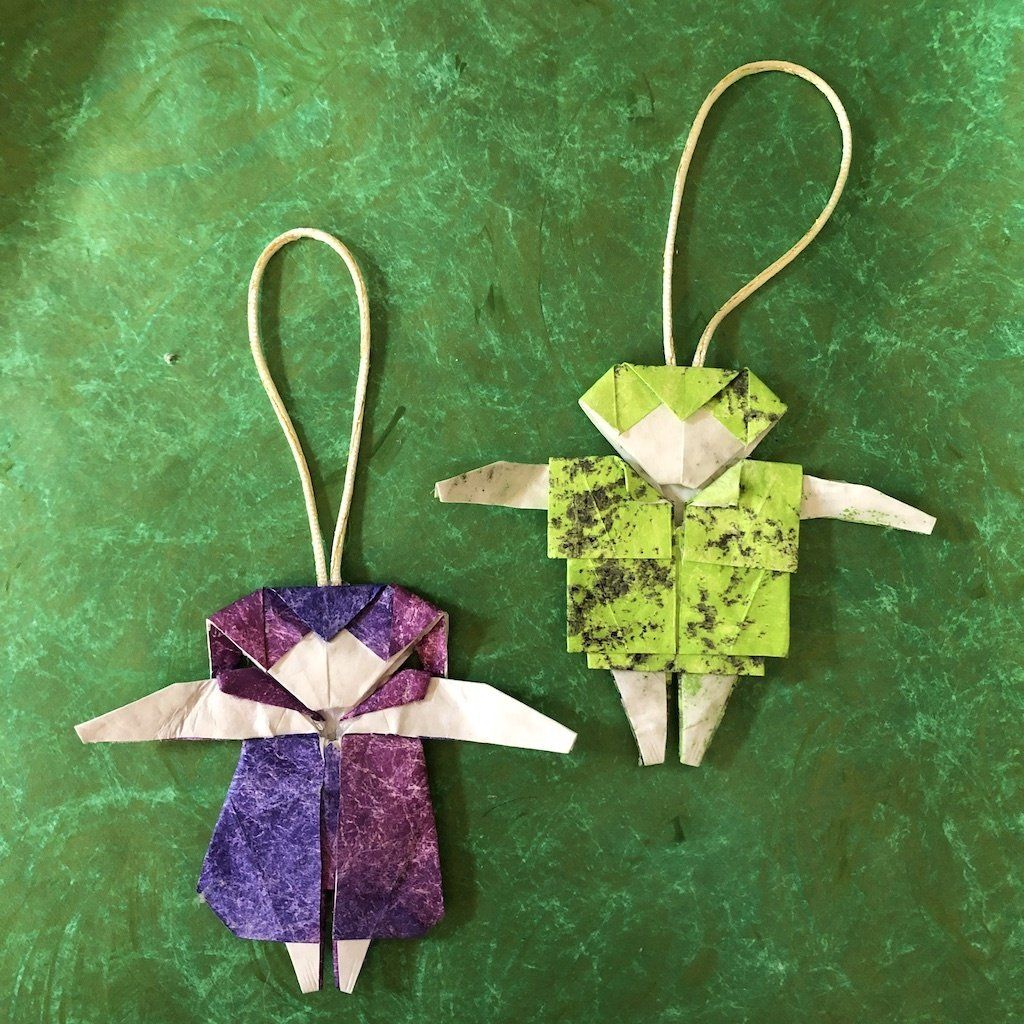
Each keiki ornament is folded from a single square. For those of you unfamiliar with my work, my pieces are folded from a synthetic paper-like material that is water resistant and tear resistant, resulting in heirloom-quality pieces.
"Every morning when opening the kiln is like Christmas."
All of that is why playing with glass is fun for me, the artist. But art is as much about the viewers’ experience as the artist’s. I hope to bring a sense of wonder and delight to my audience. I have always struggled to find my “voice” or my “style” as an artist and despite years of trying to figure that out, I have yet to solve that problem. Instead, I try to create work that will delight, charm, and bring joy with my glass.
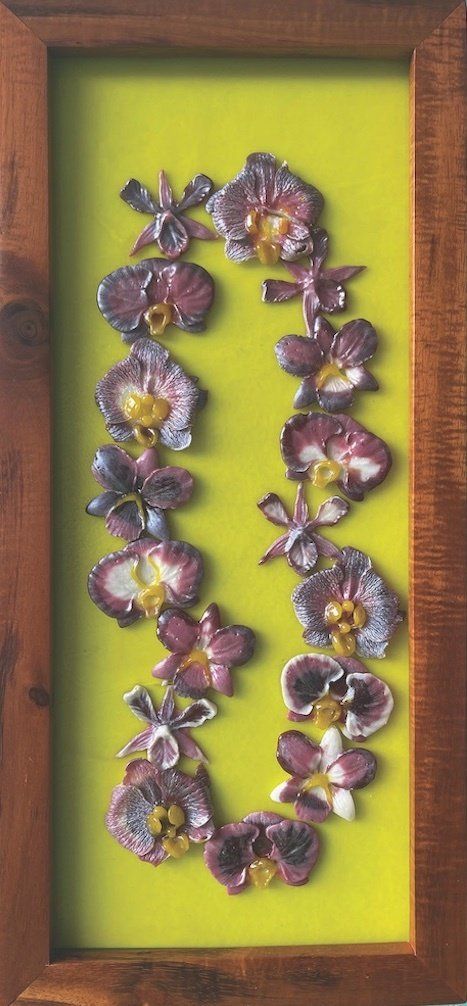
For the past year, my theme has been fish and sea creatures and I have really enjoyed pushing my skills and knowledge. New skills I've acquired include how to build a mobile, and how to wood burn, I have recently brought in several of these fish sculptures on Koa wood into the gallery. But, fish are giving way to flowers and botanicals. This new direction came about from a personal challenge I set myself to make a glass lei. Lots of experimentation resulted in these framed leis and the smaller, gilt framed single flowers. These flowers are created using an old technique called pâte de verre, where glass powders are made into a paste and poured into a mold, set and then fired. Several were “strung” as leis, and fired again onto a clear sheet of glass, then set against a lauhala background and framed in koa. The remainder were framed in elaborate gilt frames set against bright and colorful backgrounds.
Tamisha Lee will be working at the gallery Monday, Dec.12, and Fridays Dec. 16 and 30, 2022. The Kailua Village Artists Gallery is located in the Kona Marketplace, 72-5729 Alii Drive, Suite C-110 in Kailua-Kona. The gallery is open daily from 10 am – 5 pm. For more information call 329-6653, visit www.kailuavillageartists.com or on FaceBook: Kailua Village Artists.
December New Art At the Gallery
More Charity Tree Ornaments
REMINDER: 100% OF ALL CHARITY TREE ORNAMENT SALES BENEFIT LOCAL KEIKI (children).
Subscribe to Our Monthly Newsletter
Thank you!
Please try again later.
Changed your mind? Just Unsubscribe.
Sorry you changed your mind, but we respect your decision. Aloha.
Please try again later.
75-5729 Alii Drive, Suite C-110
Kailua Kona, HI 96740
808-329-6653
kailuavillageartistskona@gmail.com
All Rights Reserved | Kailua Village Artists, Inc.

